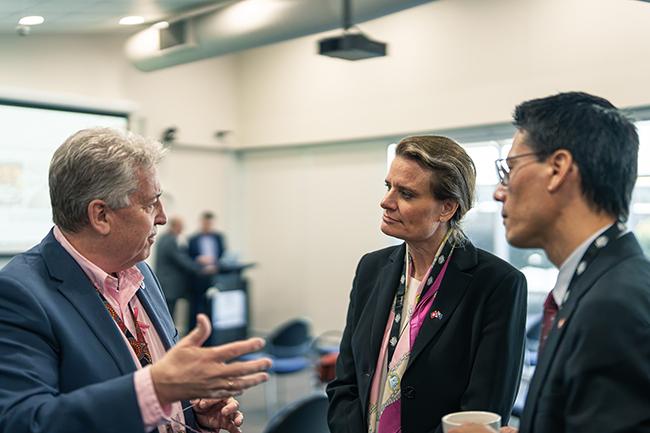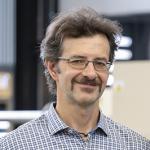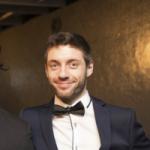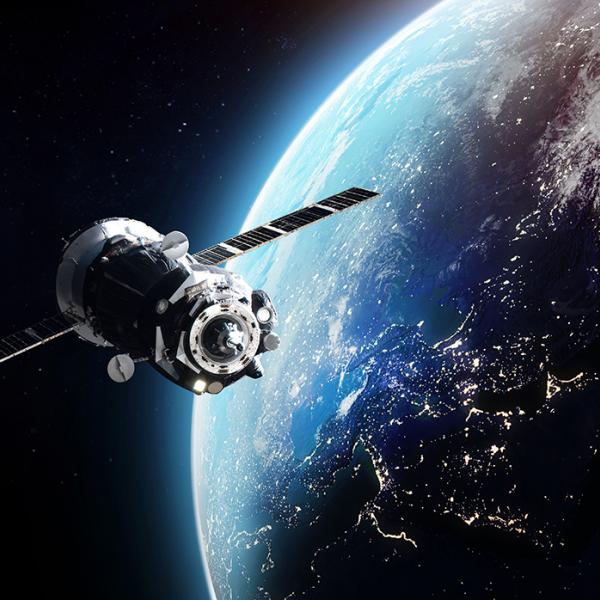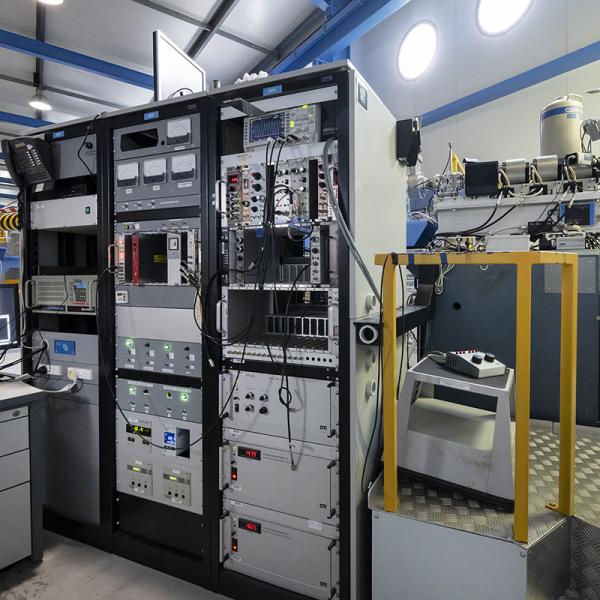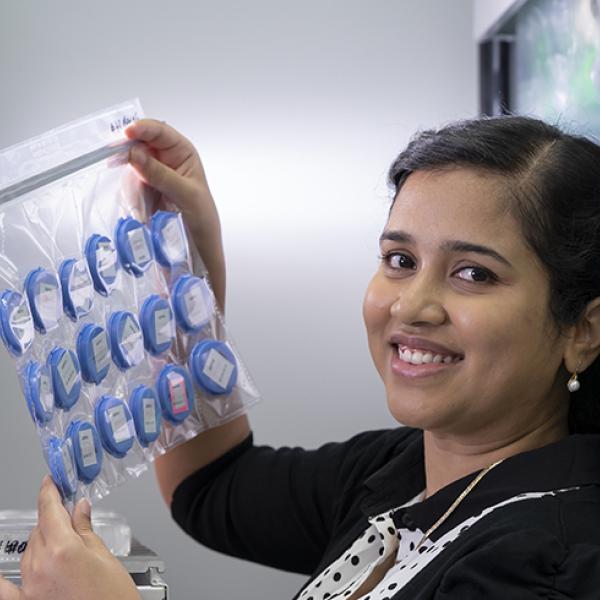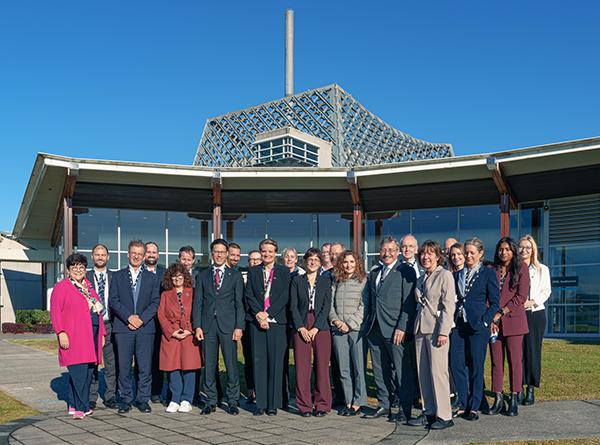
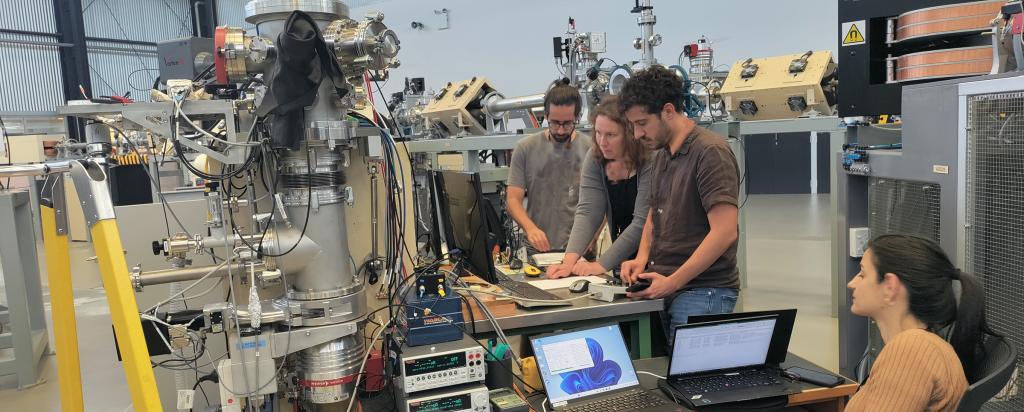
Published on the 3rd July 2025 by ANSTO Staff
Official Swiss visit focuses on shared research interests
Update: 4 July 2025
ANSTO welcomed a high-level Swiss delegation on Thursday 3 July to the Lucas Heights campus, including Switzerland’s State Secretary for Education, Research and Innovation (Head of the Science Delegation), Ms Martina Hirayama; Ambassador for Bilateral Economic Relations (Head of the Business Delegation), Her Excellency Andrea Rauber Saxer; Switzerland’s Ambassador to Australia, His Excellency Nikolas Johannes Stürchler Gozenbach; and Consul General in Sydney, Mrs Elisabeth Andrea Bösch Malinen.
Other members of the group included Members of the Science and Business delegations, who were also in Australia.
CEO Shaun Jenkinson warmly welcomed the delegation, following their tour of the OPAL multi-purpose reactor, the Australian Centre for Neutron Scattering and nuclear medicine facilities.
ANSTO shared three presentations highlighting the Australian Synchrotron, the Centre for Accelerator Science, and Critical Minerals.
The Swiss and ANSTO are interested in deepening collaborations by exploring potential opportunities in areas including nuclear medicine, biomedical research, critical minerals, materials research, and advanced manufacturing.
ANSTO has collaborated with several Swiss institutions, such as The Paul Scherrer Institut, the University of Bern, and ETH on research activities at its facilities and the Environment Research and Technology Group.
Australia has several bilateral agreements with Switzerland, including on nuclear safeguards and Memoranda of Understanding have been signed on cooperation in the fields of science, research and innovation. In 2020, Australia and Switzerland signed a Statement of Commitment to cooperate on Antarctic research.
The first results of the ETH Zürich and ANSTO collaboration focused on silicon carbide (SiC) devices have been reported in two publications.
Read more about the collaboration, which commenced in 2024.
Dr Corinna Martinella (pictured below), formerly a senior scientist at ETH Zurich, said in a LinkedIn post that the research advances an understanding of the basic mechanisms of radiation damage in SiC power devices exposed to heavy ions.
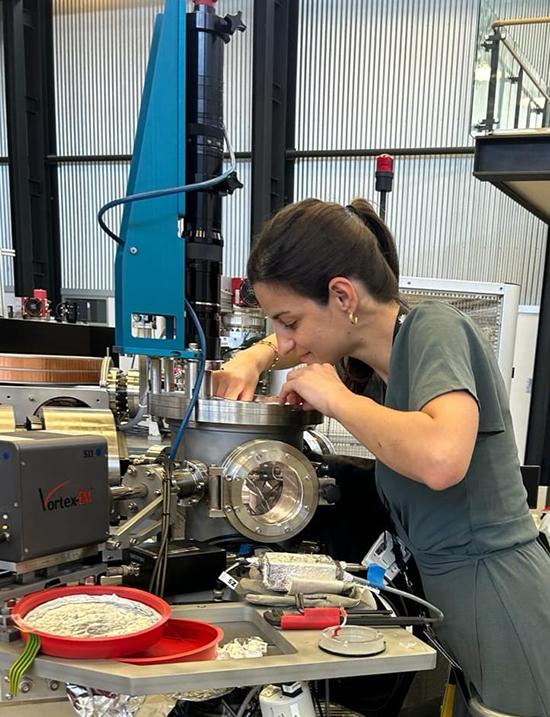
The journal article in IEEEExplore describes the testing of how commercial silicon carbide (SiC) power devices. including MOSFETs and Junction Barrier Schottky (JBS) diodes, respond to space-like radiation at a microscopic level.
By using a highly focused beam of particles at the Centre for Accelerator Science, that either travel deep or stay near the surface, they studied how different kinds of radiation affect the devices.
They found that short-range particles could cause a type of damage called single event leakage current (SELC) in both older and newer versions of these devices.
Monte Carlo simulations performed at ANSTO helped explain how particle depth affects the damage. In particular, when particles strike certain areas of a diode, they increase the electric field and trigger a chain reaction of ionisation, which may lead to lasting defects.
Some parts of the devices, such as the source and the gate metal lines showed no signs of damage. However, there were differences in how the devices reacted depending on whether the particle beam hit directly on the source pad or off to the side. A protective polyimide layer reduced how deeply ions could penetrate in off-pad areas.
Dr Martinella extended thanks to Dr. Ryan Drury and Dr. Zeljko Pastuovic for their invaluable support during the experiments, and to Dr. Stefania Peracchi for leading the preparation of the test campaign at ANSTO and for significant contributions throughout the entire project. All are co-authors on the publication.
A second paper also in IEEEExplore investigated the relation between SEEs caused by heavy-Ion Irradiation and defects in SiC devices. First author PhD student Helton De Medeiros. used heavy-ion irradiation with different linear energy transfers and ion penetration ranges to investigate the radiation tolerance of SiC power diodes.
Single event leakage current degradation was observed for ion ranges shorter than the top crystalline layer. Other techniques were applied to explain the root cause of the observed radiation effects.
